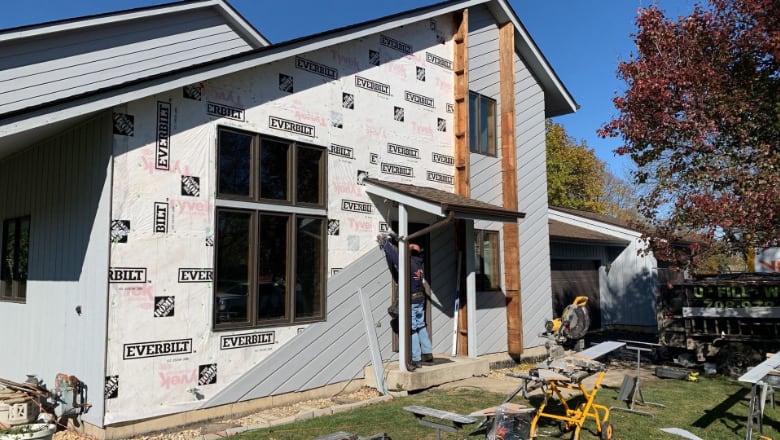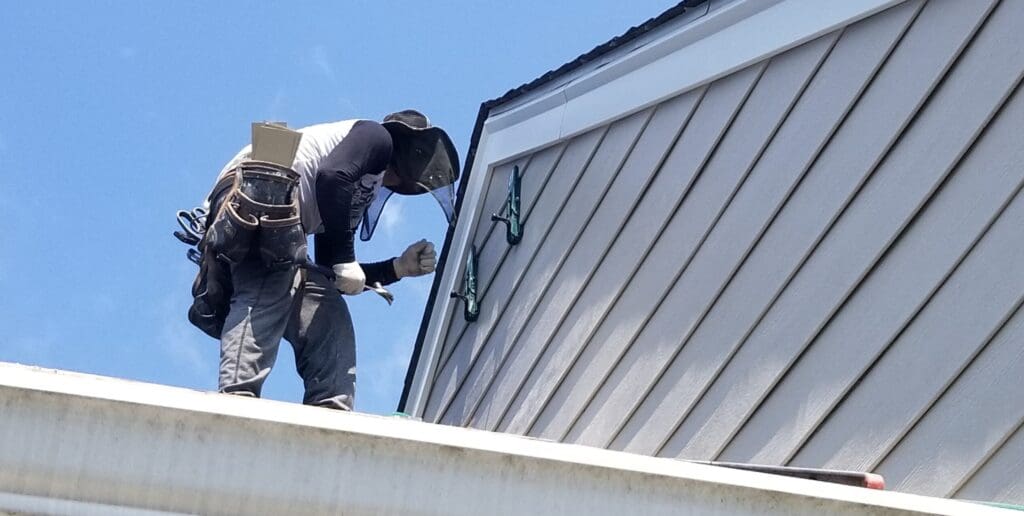Morris Siding Contractor Committed to Excellence in Every Project
Morris Siding Contractor Committed to Excellence in Every Project
Blog Article
The Important Overview to the Different Kinds Of Home Siding and Their Special Advantages
In the world of home enhancement, selecting the best exterior siding is a critical choice that influences both visual appeal and useful performance. With so lots of alternatives to take into consideration, which house siding material genuinely stands out for your details project?
Wood Exterior Siding
Wood home siding, a popular option for household exteriors, provides an ageless visual that integrates natural charm with architectural honesty. This home siding material is offered in various styles, including clapboard, roof shingles, and board-and-batten, permitting property owners to tailor their façade to match their layout choices. Timber house siding is usually crafted from durable types such as cedar, redwood, or ache, which are known for their resilience and ability to withstand environmental stressors.
Among the main benefits of wood exterior siding is its exceptional insulation residential or commercial properties, which can add to energy effectiveness and reduced heating costs. Furthermore, wood house siding is naturally degradable, making it an ecologically pleasant choice when sourced sustainably. Regular upkeep, consisting of paint or discoloration, can extend its life-span and improve its appearance, enabling house owners to maintain the all-natural charm of the wood.
Nevertheless, possible downsides include sensitivity to parasites, rot, and weather damages, necessitating ample therapy and maintenance - morris siding contractor. Despite these concerns, when properly cared for, timber exterior siding can give a resilient and beautiful option that boosts the personality of a home while providing a warm, welcoming environment

Plastic Exterior Siding
Vinyl siding has actually become a leading option for house owners looking for a low-maintenance exterior option that integrates longevity and price. This flexible product is crafted from polyvinyl chloride (PVC), making it immune to numerous weather condition conditions, including dampness and UV rays. Consequently, vinyl exterior siding does not warp, rot, or fade, ensuring resilient visual appeal.
One of the key advantages of plastic home siding is its considerable variety of designs and shades, enabling homeowners to achieve the preferred seek their residential or commercial property without the requirement for regular repainting. Additionally, plastic house siding is easy to mount, which can dramatically minimize labor prices during construction or improvement jobs.
Plastic house siding likewise adds to power performance. Many alternatives function insulation support, which improves thermal efficiency, helping to preserve comfortable indoor temperatures and potentially lowering energy costs. Its smooth surface area helps with easy cleansing, needing just routine cleaning with a garden hose pipe to remove dust and debris.
Fiber Concrete Exterior Siding
Fiber cement home siding has gotten grip amongst contractors and homeowners alike due to its amazing combination of resilience and aesthetic convenience. Made up of a blend of sand, cement, and cellulose fibers, this exterior siding option is engineered to hold up against extreme weather, including high winds, hefty rainfall, and temperature level changes, making it a lasting choice for property outsides.
One of the key click to find out more advantages of fiber cement house siding is its resistance to pests, such as termites, and its non-combustible nature, offering improved fire safety and security. morris siding contractor. Furthermore, it is readily available in a wide range of designs, structures, and shades, permitting home owners to accomplish their preferred aesthetic without giving up efficiency
One more benefit is its low maintenance requirements; useful site fiber cement siding normally needs painting or staining every 5-10 years, which is less regular than other materials. Additionally, its longevity contributes to a lower overall cost of possession, as it lowers the need for frequent repair services or substitutes.
Ultimately, fiber cement house siding stands for an excellent financial investment for those looking for a durable, eye-catching, and flexible outside choice, combining both type and feature to enhance the home's visual allure.
Metal Home Siding
The allure of steel home siding hinges on its durable sturdiness and contemporary visual appeal, making it a popular choice for contemporary style. Offered in products such as light weight aluminum and steel, steel siding offers a series of colors and surfaces, enabling homeowners to accomplish a personalized appearance that complements their layout vision.

Power effectiveness is an additional substantial benefit, as lots of metal home siding items are created with insulation alternatives that aid manage indoor temperatures. This can bring about lowered power costs over time. In addition, steel home siding is commonly recyclable, making it an eco pleasant selection for sustainability-minded house owners.
The setup process for steel siding can be fairly straightforward, leading to a quicker turnaround time for building projects. On the whole, steel home siding combines functionality and design, making it a useful alternative for those seeking a long-lasting and aesthetically attractive exterior surface.
Block and Rock House Siding
Brick and rock exterior siding attracts attention as a classic option that boosts the aesthetic beauty of any type of home. Recognized for their resilience and reduced upkeep, these products give a phenomenal roi while raising the residential or commercial property's curb allure. Available in numerous shades, appearances, and patterns, block and stone can be customized to suit varied architectural designs, from standard to modern.
Among the main advantages of brick and stone home siding is their power straight from the source efficiency. Both materials possess all-natural shielding residential or commercial properties that help control interior temperature levels, possibly lowering heating & cooling prices. Furthermore, they provide remarkable fire resistance compared to other exterior siding options, contributing to improved security.
One more advantage is their long life. Block and stone can last for decades, frequently calling for marginal maintenance past periodic cleaning. Unlike wood house siding, they are unsusceptible pests and rot, guaranteeing a lasting exterior that holds up against the aspects.
Conclusion
In recap, the selection of exterior siding dramatically influences a home's aesthetic appeal, energy efficiency, and maintenance requirements. Each kind of home siding-- whether timber, plastic, fiber cement, brick, or steel and stone-- uses special advantages tailored to various homeowner choices and ecological conditions. Comprehending these alternatives allows informed choices that enhance both the resilience and aesthetic appeal of household outsides. Inevitably, choosing the best home siding is vital for achieving an equilibrium between performance and layout in domestic style.
One of the primary benefits of timber exterior siding is its exceptional insulation residential properties, which can contribute to power effectiveness and lower home heating prices. In addition, wood home siding is naturally degradable, making it an eco friendly alternative when sourced sustainably.One of the key advantages of metal exterior siding is its resistance to different environmental elements.Power efficiency is another significant advantage, as several metal house siding items are created with insulation alternatives that aid control interior temperatures. Each kind of home siding-- whether wood, vinyl, fiber cement, metal, or block and rock-- provides distinct benefits tailored to different homeowner choices and environmental problems.
Report this page